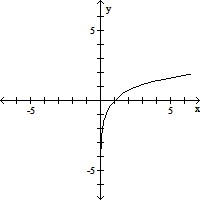Use synthetic division to divide f(x) by x - k for the given value of k. Then express f(x) in the form  for the given value of k.f(x) = 3x4 - 9x3 + 2x2 - 6x; k = 3
for the given value of k.f(x) = 3x4 - 9x3 + 2x2 - 6x; k = 3
A. f(x) = (x - 3)(3x3 + x2 - x + 3) + 9
B. f(x) = (x + 3)(3x2 + 2x)
C. f(x) = (x + 3)(3x3 + 2x)
D. f(x) = (x - 3)(3x3 + 2x)
Answer: D
You might also like to view...
The graph of a function f is given. Use the graph to answer the question.For which of the following values of x does f(x) = 15?
A. 0 B. 15 C. 40 D. -25
Use a graphing calculator to sketch the graph of the quadratic equation, and then give the coordinates for the x-intercepts (if they exist).y = x2 + 10x + 24
A. (4, 0); (6, 0) B. (-4, 0); (6, 0) C. (-4, 0); (-6, 0) D. (4, 0); (-6, 0)
Determine whether the graph is that of a function. If it is, use the graph to find its domain and range, the intercepts, if any, and any symmetry with respect to the x-axis, the y-axis, or the origin.
A. function domain: {x|x > 0} range: all real numbers intercept: (1, 0) symmetry: none B. function domain: all real numbers range: {y|y > 0} intercept: (1, 0) symmetry: none C. function domain: {x|x > 0} range: all real numbers intercept: (0, 1) symmetry: origin D. not a function
A board 26 ft long leans against a vertical wall. If the lower end is being moved away from the wall at a rate of 0.4 ft/sec, how fast is the upper end coming down when the lower end is 10 ft from the wall?
What will be an ideal response?